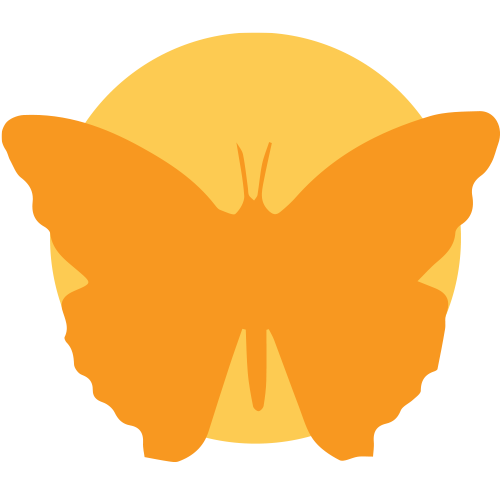

In a Habitat Learning Lab (aka “Habitat Lab”), a Frog and Toad Habitat includes a small man-made pond with shallow water and a bog garden with damp soil, which provides the water and plants that frogs and toads need for food, water, shelter, and a place to raise their young.
Below is information to help you build, use and maintain your Frog and Toad Habitat:
A Frog and Toad Habitat should provide food sources, water, shelter, and places for frogs and toads to lay their eggs which will become tadpoles. To meet their habitat needs, this learning station will consist of two features built together as one habitat:
#1: Frog Pond – A man-made frog pond can be a pre-formed plastic pond that is at least 10-15 square feet in size and that is 6-12 inches deep. It should have shallow water only 6-8 inches deep and include native marginal aquatic plants such as lizard’s tail (Saururus cernuus), arrow arum (Peltandra virginica), arrowhead (Sagittaria montevidensis), and pickerelweed (Pontederia cordata). Check out our Plant Suggestions for a full list.
#2: Bog Garden – The bog garden should be at least 4 x 8 ft (or larger) in size and can be created with a 10 x 13 ft pond liner that is 12-18 inches deep and is filled with layers of peat moss, sand and compost mixed with top soil and other amendments. A bog is a type of wetland in a low-lying area where water collects, often times depositing dead, decaying plant matter. Thus, the soil becomes high in organic matter. Flora and fauna that thrive in a bog area must like a moist environment, but do not require standing water (like a pond, marsh or swamp) unless the bog area recently experienced heavy rains and has not yet drained. Example native plants that you can include in your shaded bog garden are Southern woodfern (Dryopteris ludoviciana), Eastern Red Columbine (Aquilegia canadensis), and heartleaf foamflower (Tiarella cordifolia). Check out our Plant Suggestions for a full list.
Install the Frog & Toad Habitat near a spigot so that you can fill the pond and bog with water during low rain levels. It is also important to install the bog in a flat area so that the soil in the bog garden will not wash out of the bog in a heavy rain. Install this habitat in full or part-shade, as frogs and toads prefer to not be in direct sunlight for extended periods of time.
Food: Frogs and toads begin life as herbivorous, aquatic tadpoles that feed on vegetation in the pond. As they go through metamorphosis their mouthparts change and they become carnivorous, terrestrial adults. The water in and vegetation around your pond will provide food directly for the frogs and toads as herbivorous tadpoles, as well as carnivorous adults by attracting insects and insect larva. You can also install 4-6 Solar LED Path Lighting Lights around the habitat to attract insects to the area at night.
Water: Frogs and toads require water for reproduction, their aquatic larval stage, and for keeping their skin moist and hydrated as adults. The pond will provide the water needed for frogs and toads throughout their whole lives. The aquatic plants inside of and around the pond will filter and aerate the water.
Shelter: The marginal aquatic plants in the pond, the rocks lining the pond, the bog plants and the moist soil in the bog will provide shelter for the frogs and toads. Shelter is important because frogs and toads are prey items for numerous animals that can visit your Habitat Lab.
Places to Raise Young: Frogs and toads must lay their eggs in water because the eggs are in a jelly-like mass (not a hard shell like bird or reptile eggs) that must be covered with water or the eggs will dry up and die. The tadpoles that hatch from the eggs also require water, as they breathe through gills and eat aquatic vegetation before metamorphosis. Adults do not stick around to protect the eggs or tadpoles, so vegetation and rocks offer protection from predators as the tadpoles grow and change into frogs.
Frog & Toad Habitat Project Plan:
Materials Budget & Construction Instructions
FREE Project Plan – Active Habitat Lab Members can log in to the Habitat Lab Members Portal
PURCHASE Project Plan – Visit our STORE
These FREE Materials Budget documents (listed below) include a list of all of the materials needed to construct a frog and toad habitat that includes a frog pond and bog garden.
Visit our Plant Suggestions webpage to find a full list of plants ideal for a frog and toad habitat.
A frog and toad habitat provides your students the opportunity to closely observe the unique life cycle, physical adaptations, and behavior of native frogs and toads.
The links below are to kid-friendly webpages that will help your students explore and research the habitats, plants, and wildlife in your Habitat Lab:

Below are free activity pages related to frogs and toads:
Below are free activities & lesson plans related to frogs and toads and their habitats:

Get creative with your students and make “Toad Abodes”. Paint (or decorate otherwise) terra cotta pots and lay them on their sides, sunken into the dirt near your pond – they will serve as habitat for your toads and frogs. It is best to place them in an area where they will be surrounded by vegetation. Use the instructions below.
Frog & Toad Maintenance Packet:
FREE Maintenance Packet – Active Habitat Lab Members can log in to the Habitat Lab Members Portal
PURCHASE Maintenance Packet – Visit our STORE
Use these General Maintenance Tips (PDF) to care for your frog and toad habitat:
Weekly
Late Summer
Fall
Winter
Spring
Website Design and Digital Marketing by